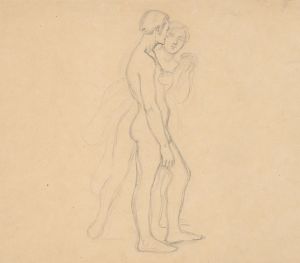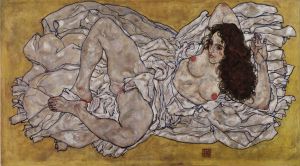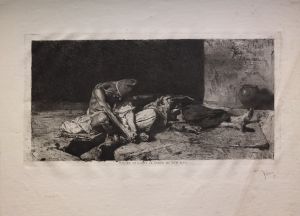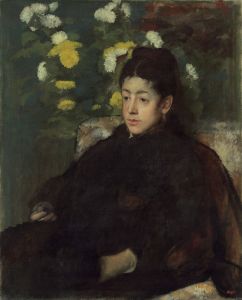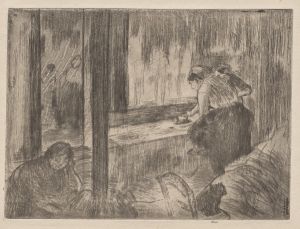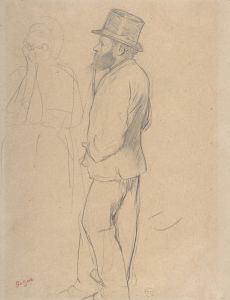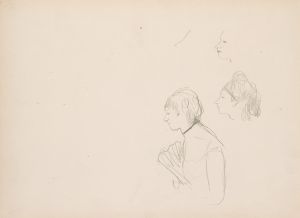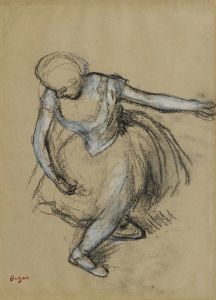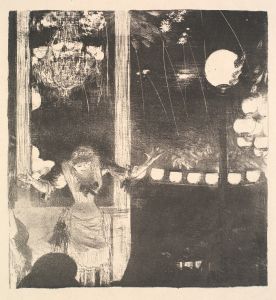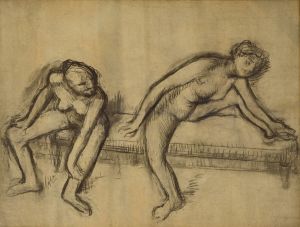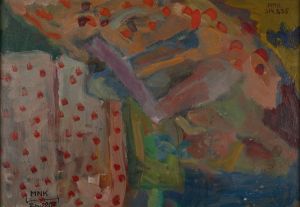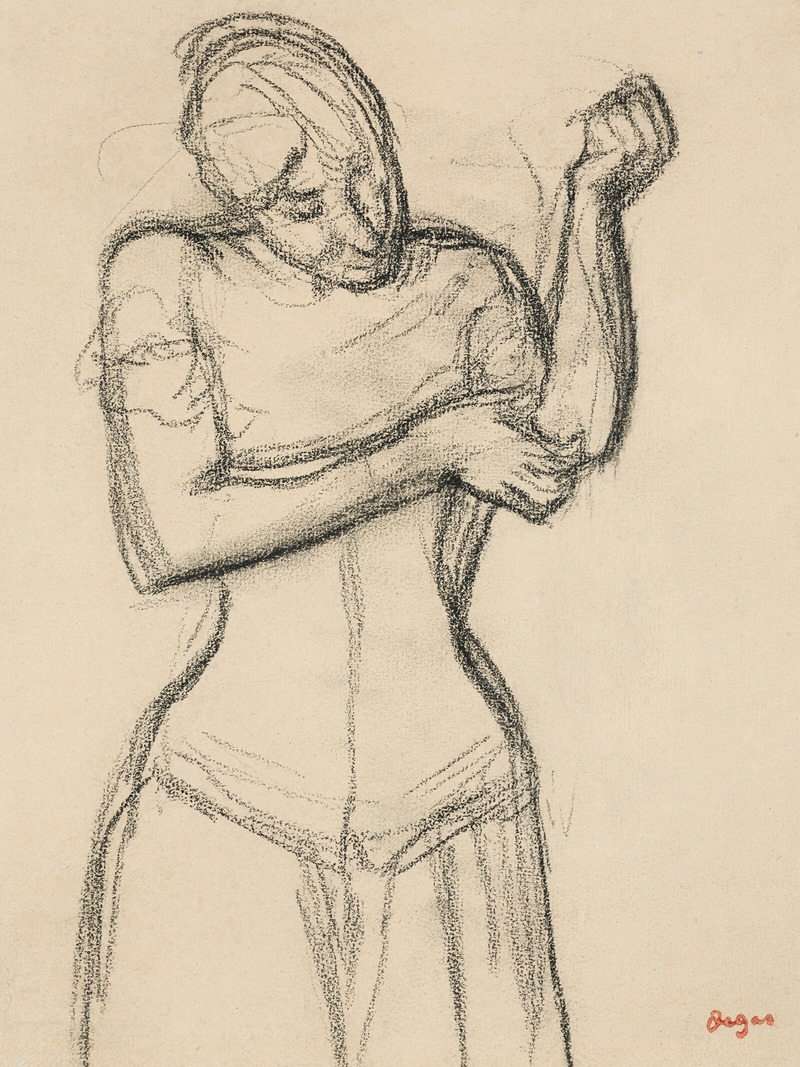
Femme en corset, vue de face
A hand-painted replica of Edgar Degas’s masterpiece Femme en corset, vue de face, meticulously crafted by professional artists to capture the true essence of the original. Each piece is created with museum-quality canvas and rare mineral pigments, carefully painted by experienced artists with delicate brushstrokes and rich, layered colors to perfectly recreate the texture of the original artwork. Unlike machine-printed reproductions, this hand-painted version brings the painting to life, infused with the artist’s emotions and skill in every stroke. Whether for personal collection or home decoration, it instantly elevates the artistic atmosphere of any space.
Edgar Degas, a prominent French artist associated with the Impressionist movement, is renowned for his innovative approach to painting, sculpture, and drawing. One of his works, "Femme en corset, vue de face" (Woman in Corset, Front View), exemplifies his interest in the human form and his skill in capturing the subtleties of everyday life.
Degas was born in Paris in 1834 and developed a keen interest in art from a young age. He studied at the École des Beaux-Arts and spent time in Italy, where he was influenced by the classical techniques of the Renaissance masters. However, Degas's work diverged from traditional academic art, as he became more interested in contemporary subjects and innovative compositions.
"Femme en corset, vue de face" is a testament to Degas's fascination with the human body and his ability to depict it with both realism and sensitivity. The painting portrays a woman wearing a corset, viewed from the front. Degas's choice of subject reflects his interest in the private, intimate moments of women's lives, a theme that recurs throughout his oeuvre. His works often depict women in various states of dress and undress, engaged in activities such as bathing, dressing, or resting.
Degas's technique in "Femme en corset, vue de face" is characterized by his use of light and shadow to create depth and texture. He was known for his ability to capture the play of light on skin and fabric, giving his figures a lifelike presence. The painting's composition is carefully balanced, with the woman's form occupying the central space, drawing the viewer's eye to her posture and expression.
Throughout his career, Degas was associated with the Impressionist movement, although he preferred to be called a "realist" or "independent." Unlike many of his contemporaries, Degas was less interested in plein air painting and more focused on the human figure and urban scenes. His works often explore themes of modernity, movement, and the complexities of social life in 19th-century Paris.
Degas's interest in the human form extended beyond painting; he was also an accomplished draftsman and sculptor. His studies of dancers, bathers, and women in various poses reveal his dedication to understanding anatomy and movement. This focus on the human body is evident in "Femme en corset, vue de face," where the woman's posture and the tension of the corset are rendered with precision and care.
The painting is part of a broader body of work in which Degas explored similar themes and subjects. His depictions of women in intimate settings have been the subject of much analysis and interpretation, with scholars noting both the sensitivity and the voyeuristic elements present in his work. Degas's ability to capture the nuances of human expression and form has cemented his reputation as one of the most important artists of his time.
"Femme en corset, vue de face" exemplifies Degas's mastery of form, light, and composition, as well as his interest in the private moments of everyday life. Through his innovative approach to art, Degas has left a lasting impact on the world of painting, influencing generations of artists who followed. His works continue to be celebrated for their technical skill, emotional depth, and unique perspective on the human experience.





